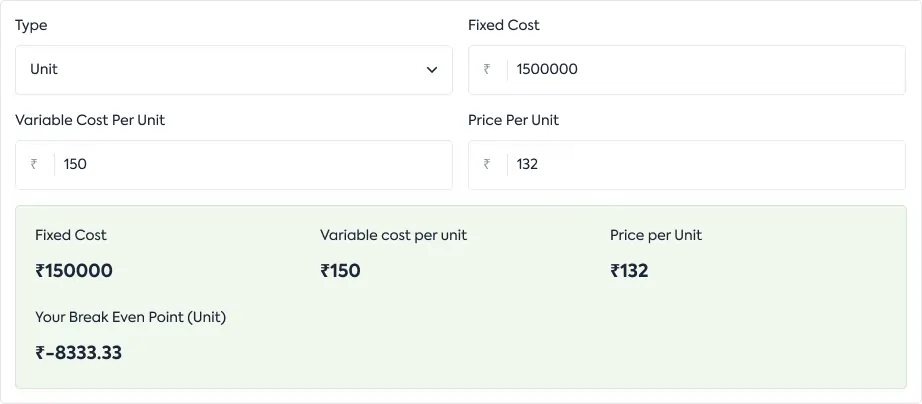Grab a chance to avail 6 Months of Performance Module for FREE
Book a free demo session & learn more about it!
-
Will customized solution for your needs
-
Empowering users with user-friendly features
-
Driving success across diverse industries, everywhere.
Grab a chance to avail 6 Months of Performance Module for FREE
Book a free demo session & learn more about it!
Superworks
Modern HR Workplace
Your Partner in the entire Employee Life Cycle
From recruitment to retirement manage every stage of employee lifecycle with ease.


Seamless onboarding & offboarding
Automated compliance & payroll
Track performance & engagement

Introduction:
The Full & Final Settlement (F and f settlement) process is a crucial aspect of employee offboarding. This guide aims to demystify the F&F settlement, focusing on its calculation, benefits, and compliance aspects with the help of the Full And Final Settlement Calculator.
What Is Full & Final Settlement and Its Eligibility?
Understanding the FNF meaning in HR is quite easy. Full & Final Settlement is the process of clearing all dues payable to an employee upon their resignation or termination. This includes pending salary, leave encashment, bonuses, and other entitlements. Eligibility for F&F settlement applies to all employees who are leaving the organization, regardless of the reason for their departure.
What Benefits Does Full & Final Settlement Offer?
Full And Final Settlement Calculator ensures that employees receive all due payments when they leave an organization. It provides financial closure for both the employee and the employer, preventing any future disputes over unpaid dues.
Do error free accurate payroll with our state-of-the-art payroll software!
How Much Do Employees and Employers Contribute?
In the context of F&F settlement, contributions refer to the payouts made by the employer to settle all pending dues of the employee. Employees do not contribute to this process; it is entirely the employer’s responsibility to ensure all dues are paid accurately.
How Is Full & Final Settlement Calculated?
The calculation of F&F settlement [also known as the notice period calculator online] by the FNF calculator is a critical aspect for employers. It involves the following components:
- Pending Salary: Salary for the days worked in the last month.
- Leave Encashment: Payment for unused leave days.
- Bonuses/Incentives: Any performance bonuses or incentives due.
- Gratuity: If applicable, based on the employee’s tenure.
- Deductions: Any pending loans or advances taken by the employee.
- Compliance and Registration:
Employers must ensure compliance with labor laws and company policies during the F&F settlement process. Proper documentation and timely processing are essential to avoid legal complications and ensure smooth offboarding.
Example of Full & Final Settlement Calculation:
Full and final settlement calculation format in Excel, unlike the name, it is quite easy to do. Let’s assume an employee is leaving on the 15th of the month with a monthly salary of ₹30,000. The employee has 5 days of unused leave and is entitled to a bonus of ₹5,000.
Pending Salary: (15/30) * ₹30,000 = ₹15,000.
Leave Encashment: (5/30) * ₹30,000 = ₹5,000.
Bonus: ₹5,000.
Gratuity: Calculated as per applicable laws and tenure (example not provided here for brevity).
Total Settlement: ₹15,000 (Pending Salary) + ₹5,000 (Leave Encashment) + ₹5,000 (Bonus) = ₹25,000.
This example provides a basic understanding of how F&F settlement is calculated. For precise calculations, refer to your company’s policy or use an online F&F settlement calculator.
Can Employees Dispute the Full & Final Settlement?
Maintaining the Full and final settlement calculation sheet is quite difficult. Employees have the right to dispute the F&F settlement if they believe the calculations are incorrect or if there are unpaid dues. It is advisable to first address the issue internally with the HR department. If unresolved, employees may seek legal recourse.
FAQs
1. What is Full & Final Settlement (F&F)?
Full & Final Settlement is the process by which an employer clears all dues payable to an employee when they leave the organization. This includes pending salary, leave encashment, bonuses, and other entitlements.
2. Who is eligible for Full & Final Settlement?
All employees who are leaving the organization, whether due to resignation, termination, retirement, or end of contract, are eligible for Full & Final Settlement.
3. What components are included in Full & Final Settlement?
The components typically included in Full & Final Settlement are:
- Pending salary for the days worked in the last month.
- Payment for unused leave days (leave encashment).
- Performance bonuses and incentives.
- Gratuity (if applicable, based on tenure).
- Any other contractual entitlements.
4. How is the Full & Final Settlement calculated?
The calculation by the Full And Final Settlement Calculator involves adding up the pending salary, leave encashment, bonuses, and gratuity, and deducting any pending loans or advances. The formula varies based on company policy and applicable laws.
5. When should the Full & Final Settlement be processed?
The settlement should ideally be processed within 30 to 45 days of the employee’s last working day. However, the exact timeframe can vary based on company policy and local labor laws.
Conclusion:
Full And Final Settlement Calculator is more than just a compliance requirement; it’s a vital process to ensure a smooth transition for departing employees. For more detailed guidance, consulting specific resources or using tools like the Superworks payroll system is advisable.
This comprehensive guide provides an overview of the Full & Final Settlement process. For detailed and up-to-date information, it’s recommended to refer to your company policies or consult with HR professionals.
